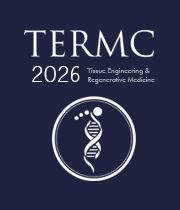Grid Cells
Grid Cells are a remarkable type of neuron found in the entorhinal cortex, a region of the brain associated with spatial memory and navigation. These cells were first discovered in rodents and later identified in humans. Grid cells exhibit a unique firing pattern, with their activity forming a hexagonal grid-like pattern that covers the entire space of the environment. This distinctive spatial representation plays a crucial role in the brain's cognitive mapping system, helping animals, including humans, navigate and remember spatial locations. Grid cells are part of the larger network involved in spatial cognition, which includes place cells and head direction cells. Together, these cells contribute to the formation of cognitive maps that enable individuals to navigate their surroundings effectively. Grid cells are thought to integrate sensory input and self-motion cues, allowing for precise spatial encoding. Understanding grid cells has implications for neuroscience, psychology, and artificial intelligence. Research in this area provides insights into the neural basis of spatial memory, with potential applications in the development of navigational aids and the understanding of spatial memory disorders. Grid cells exemplify the intricate nature of neural circuits and their role in higher cognitive functions, fostering ongoing exploration and discovery in the field of neuroscience.

Nagy Habib
Imperial College London, United Kingdom
Lucie Bacakova
Institute of Physiology of the Czech Academy of Sciences, Czech Republic



Title : AI-integrated high-throughput tissue-chip for space-based biomanufacturing applications
Kunal Mitra, Florida Tech, United States
Title : Stem cell technologies to integrate biodesign related tissue engineering within the frame of cell based regenerative medicine: towards the preventive therapeutic and rehabilitative resources and benefits
Sergey Suchkov, N.D. Zelinskii Institute for Organic Chemistry of the Russian Academy of Sciences, Russian Federation
Title : In vitro evaluation of lyophilized Dedifferentiated Fat cells (DFAT) impregnated artificial dermis
Kazutaka Soejima, Nihon University, School of Medicine, Japan
Title :
Nagy Habib, Imperial College London, United Kingdom
Title :
Alexander Seifalian, Nanotechnology & Regenerative Medicine Commercialisation Centre, United Kingdom
Title : The regenerative medicine of the future
Marco Polettini, DVM, Italy